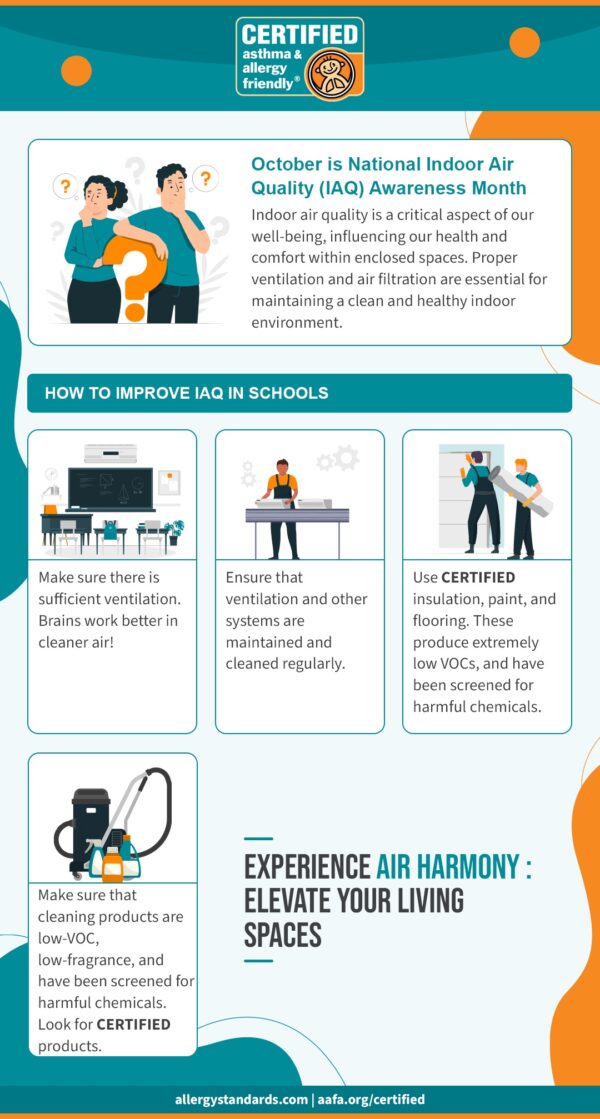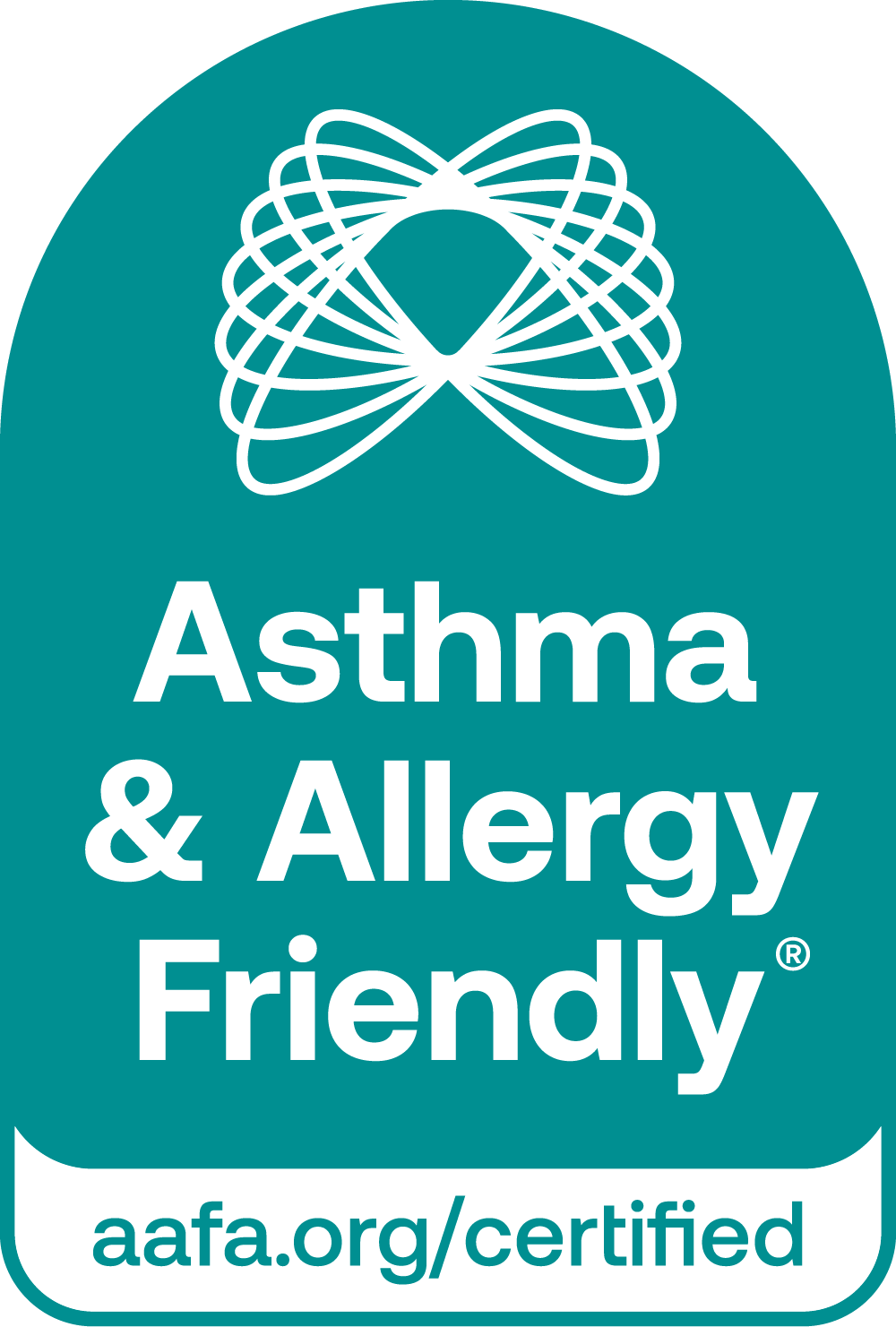As we celebrate Indoor Air Quality Awareness Month, it’s an opportune time to reflect on the importance of the air our children breathe in school environments. Schools are places of learning and growth, but the indoor air quality (IAQ) in these buildings can significantly impact both the health and academic performance of students. Given that children spend up to 1,000 hours in school each year, ensuring good air quality in these spaces is of utmost importance.
The quality of indoor air in schools has been a growing concern for parents, educators, and health professionals alike. The Environmental Protection Agency (EPA) consistently ranks indoor air pollution among the top five environmental risks to public health. For children, who are more vulnerable due to their age and higher respiratory rates, poor IAQ can lead to a range of health problems, from headaches and fatigue to aggravated asthma and allergies.
The Air They Breathe: What’s in It?
When indoor air quality is compromised, the air our children breathe in school can contain a variety of harmful pollutants. These include:
- Dust and Mold: Dust harbors dust mite allergen, a common trigger for asthma and allergies. Mold, often growing on damp surfaces, in humid conditions or in poorly maintained and older buildings, can cause respiratory issues even in those without pre-existing conditions.
- Volatile Organic Compounds (VOCs):These potentially harmful gases are emitted by building materials, new furniture, paints, flooring, adhesives and even cleaning products commonly used in schools. VOCs may cause eye, nose, and throat irritation, as well as more serious health problems over time.
- Bacteria and Viruses:Schools are notorious breeding grounds for germs, especially during the colder months. The close quarters of classrooms, combined with often poor ventilation, mean that bacteria and viruses can spread rapidly among students, leading to increased absenteeism and illness.
- Too Much CO2:Poorly ventilated classrooms can lead to elevated levels of carbon dioxide (CO2), which can cause drowsiness, headaches, and a decrease in cognitive function. Many older school buildings were not designed to accommodate today’s larger student populations, leading to overcrowded classrooms with insufficient ventilation.
- Pollution from Outside:The air outside the school can also impact indoor air quality. Idling school buses and cars emit exhaust fumes, which can seep into classrooms and playgrounds, exposing children to harmful pollutants. Studies have shown that students in high-traffic areas have slower increases in cognitive function compared to those in less polluted environments.
The Impact on Health and Learning
The consequences of poor indoor air quality in schools extend far beyond minor discomfort. Children exposed to pollutants and allergens such as dust mite allergen, mold, VOCs, excessive CO2 and particulate matter (PM) are at a higher risk of developing or aggravating respiratory conditions like asthma and allergies. Symptoms can range from mild, such as headaches and sinus congestion, to severe, including shortness of breath, coughing, and even chronic fatigue.
These health issues directly impact students’ ability to learn. Poor IAQ has been linked to decreased concentration, lower test scores, and higher absenteeism. When children are uncomfortable, sick, or unable to focus due to environmental factors, their academic performance suffers. This not only affects individual students but can also undermine the overall educational environment.
Furthermore, the well-being of teachers and staff is also compromised in poor IAQ conditions, which can lead to decreased job satisfaction and higher turnover rates. A healthy learning environment is essential for both students and educators to thrive.
Improving Indoor Air Quality in Schools
Given the significant impact of IAQ on health and learning, it is crucial for schools to take proactive steps to improve the air their students breathe. Here are some effective strategies:
 Increase Ventilation: Ensuring that classrooms are well-ventilated can be as simple as opening windows on days when outdoor air quality is good. Proper ventilation helps reduce CO2 levels and removes pollutants from the air. Schools should also ensure that exhaust hoods in science labs and kitchens are functioning properly, and that restrooms and showers have adequate ventilation.
Increase Ventilation: Ensuring that classrooms are well-ventilated can be as simple as opening windows on days when outdoor air quality is good. Proper ventilation helps reduce CO2 levels and removes pollutants from the air. Schools should also ensure that exhaust hoods in science labs and kitchens are functioning properly, and that restrooms and showers have adequate ventilation.- Lower VOCs: When schools undertake renovations or purchase new furniture, choosing materials that emit low levels of VOCs is vital. Certified Asthma & Allergy Friendly® paint, flooring and insulation for example, are better options, as they have been tested against strict standards to ensure they emit fewer harmful chemicals.
- HVAC Maintenance: Regular maintenance of heating, ventilation, and air conditioning (HVAC) systems is essential to ensure they are effectively filtering out airborne pollutants. This includes changing filters regularly according to the manufacturer’s guidelines. By choosing independently tested and validated products, like those Certified by the Asthma & Allergy Friendly® Certification Program, schools can be assured that they are making a better choice for healthier indoor air.
- Reduce Dampness and Mold: Keeping humidity levels in the ideal range of 40-50% can prevent mold growth and reduce respiratory issues. Humidifiers and dehumidifiers can help maintain this balance, and regular inspections and immediate treatment for leaks or water damage are also important.
- Upgrade Flooring :Choice of flooring should be based on how easy the floor is to clean regularly and the type of cleaning product needed to clean it. It is crucial that the manufacturer’s recommended cleaning procedures are effective at removing accumulated allergens from the flooring and ensure that allergen levels in the air remain low after cleaning. Additionally, exposure to airborne irritants, such as VOCs during floor installation and beyond should be minimal, ensuring a safer environment for all. Again, flooring which is Certified Asthma & Allergy Friendly® meets these requirements.
- Use Air Purifiers: Air purifiers can be a valuable addition to classrooms, especially those that are Certified Asthma & Allergy Friendly®. These devices help significantly reduce airborne pollutants and allergens, creating a healthier indoor environment.
- Cleaning Products: Schools should opt for cleaning products that perform well and are conscious of human health, avoiding those that release VOCs or other harmful chemicals into the air. Ideally, cleaning products should be stored in a well-ventilated designated area away from classrooms.
- Banning Idling: Minimizing the idling of vehicles near school buildings, can further reduce the risk of particulate matter entering the classroom environment.
Conclusion
The EPA has found that half of the schools in the U.S. have indoor air quality problems. With the health and well-being of our children at stake, addressing these issues is not just important—it’s imperative. By taking steps to improve IAQ, schools can create a healthier environment where students can thrive both academically and physically.
As parents and community members, we must advocate for these changes, ensuring that schools are equipped with the knowledge and tools to maintain good IAQ. Whether it’s through the use of Asthma & Allergy Friendly® Certified products, proper ventilation, or improved cleaning practices, every effort counts in safeguarding the air our children breathe.
This October, during Indoor Air Quality Awareness Month, let’s commit to making our schools a place where children can breathe easy, learn effectively, and enjoy a healthy, productive school year.
